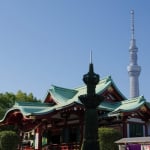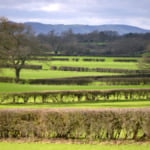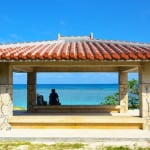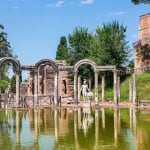Name: Sesshōseki
Address: 182 Yumoto, Nasu Town, Nasu District, Tochigi Prefecture, 325-0301, Japan
Official/Related Website: https://www.town.nasu.lg.jp/0224/info-0000000398-1.html
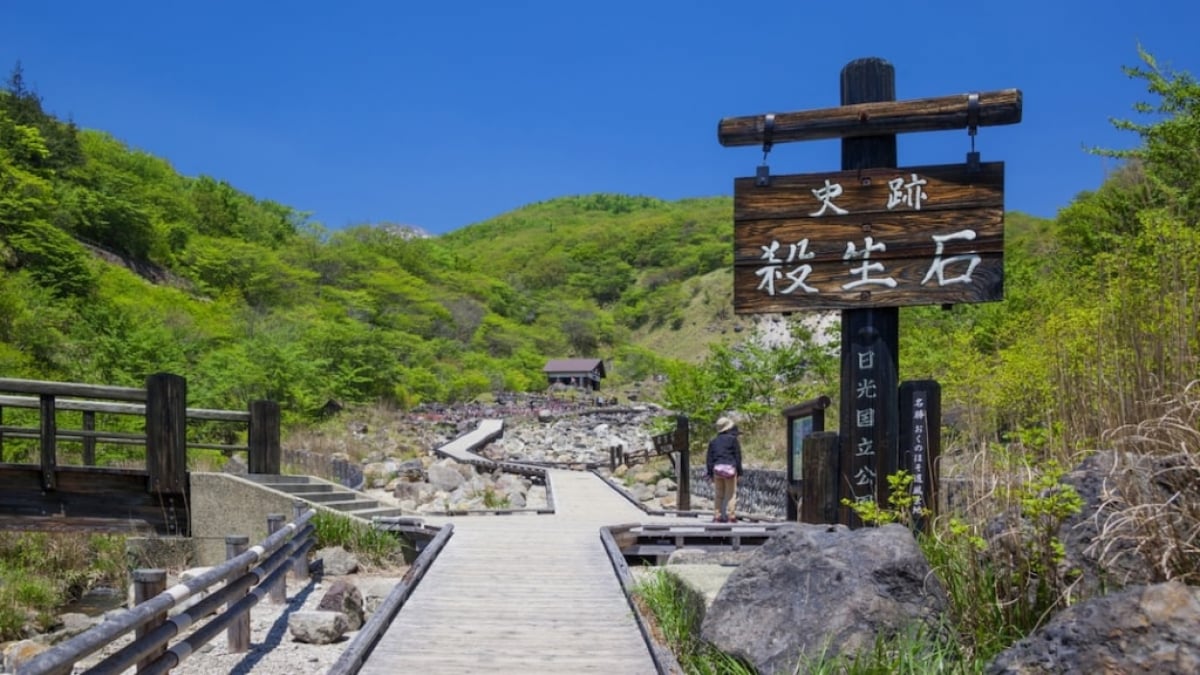
What is the power spot “Satsushoseki” in Nasu Town, Tochigi Prefecture? A spot with many legends
Located near the Yumoto Onsen area in the northern part of Nasu Town, Tochigi Prefecture, "Sesshōseki" (Killing Stone) spreads along the slopes of Mount Nasu. While vegetation grows around it, the area specifically known as Sesshōseki is completely barren, covered in rugged rocks with no greenery in sight. The air is filled with the scent of sulfur, creating a desolate yet fascinating landscape for visitors.
Sesshōseki is famous for the legend of the "Nine-Tailed Fox" and hosts the mystical "Gojinkasai" festival, where fire is used in a spectacular ceremony. With its mysterious allure, this spot continues to captivate those who visit. In this article, we will introduce the highlights of Sesshōseki, along with the legendary tales that surround it.
table of contents
[x] close
What is the power spot “Satsushoseki” in Nasu Town, Tochigi Prefecture? A spot with many legends
What is Sesshōseki (Killing Stone)?
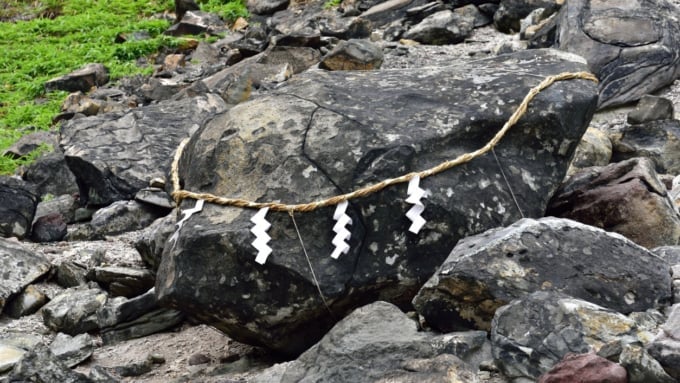
Volcanic gases are emitted around Sesshōseki. In ancient times, people saw animals dying when they got too close to the stone and believed that the stone itself was responsible for these deaths, thus naming it "Sesshōseki" (Killing Stone).
There are other stones with the same name across Japan, but in Nasu Town, Sesshōseki specifically refers to "a particularly large stone wrapped with a sacred rope (shimenawa)." Along with its eerie landscape and intriguing legend, this place offers a unique atmosphere.

In March 2022, Sesshōseki was found to have split into two, sparking discussions on social media about whether its seal had been broken. Despite being split, the two halves of the stone remain bound together with a sacred rope.
The Legend of the Nine-Tailed Fox
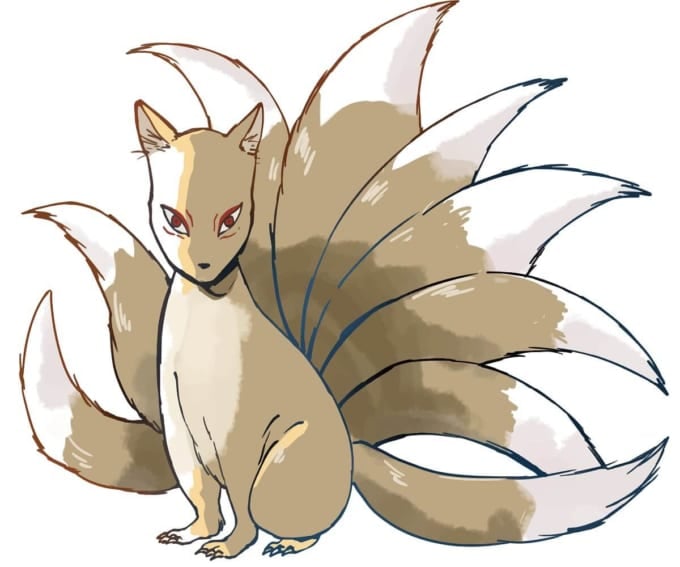
Sesshōseki is associated with a terrifying legend.
During the Heian period, there was a court lady named Tamamo-no-Mae, renowned for her exceptional beauty and the favor she received from the Emperor. However, she was actually a nine-tailed fox spirit that had traveled from India and China, disguising itself in human form to infiltrate the imperial court. As the Emperor fell ill and became bedridden, an onmyōji (a court sorcerer) uncovered the lady’s true identity and attempted to exorcise her. The fox spirit fled and transformed into a massive stone in Nasu, continuing to release toxic gases that killed any humans, livestock, or birds that passed by.
Later, a monk named Genno Oshō learned of the legend and traveled to the area. With a powerful chant, he vanquished the spirit. The stone shattered into three pieces, which scattered across different locations. One of these pieces remained in Nasu and became known as Sesshōseki.
"Sentai Jizō" (Thousand Jizō Statues)
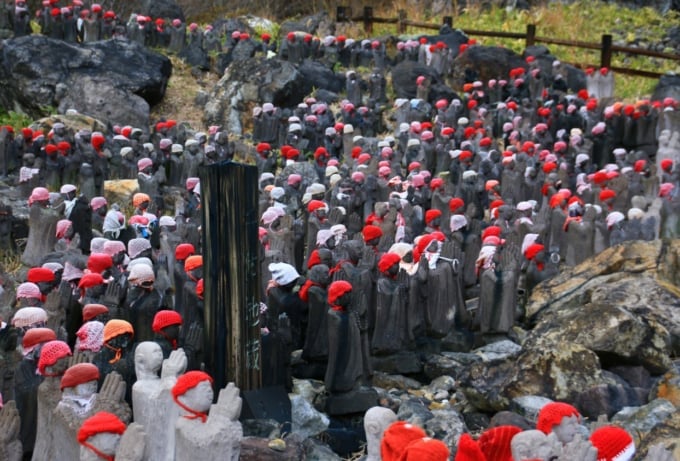
The Sentai Jizō is a sightseeing spot that can be viewed while walking along the promenade near Sesshōseki. These statues began to be placed in the 1970s, and now, as the name suggests, there seem to be a thousand Jizō statues, all wearing red hoods. Most of the Jizō statues face the same direction, with their hands joined in prayer, creating an overwhelming sight.
"Mekura Hebi Ishi" (Blind Serpent Stone)
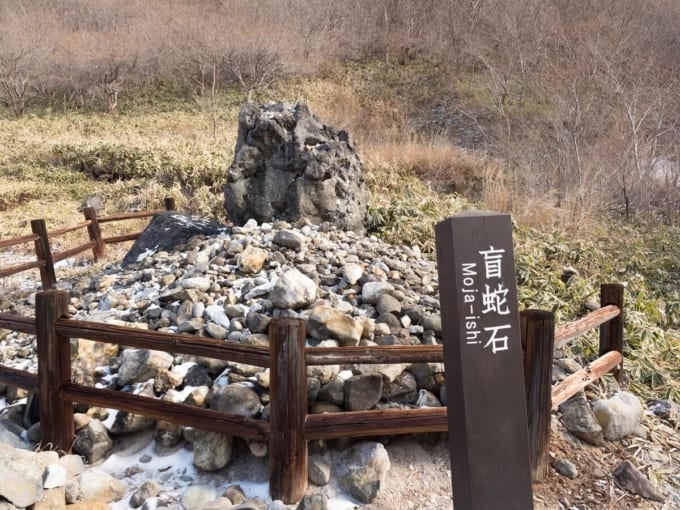
Similar to Sentai Jizō, Mekura Hebi Ishi can also be enjoyed while walking along the promenade. This stone is associated with a local legend.
Long ago, a man who managed the hot springs found a blind giant serpent. Feeling pity for the snake, he built a small hut to help it survive the cold winter. The serpent eventually disappeared, but as a token of gratitude, "Yunohana" (mineral deposits from hot springs) appeared at the site of the hut. Villagers, grateful to the serpent, named the serpent-shaped stone Mekura Hebi Ishi and treated it with great reverence.
Nasu Onsen Shrine

Nasu Onsen Shrine is said to be the place where Nasu no Yoichi, a famous samurai known for shooting a fan from a boat during battle, prayed for victory. According to legend, in the 7th century, a hunter was chasing a wounded deer into the mountains when suddenly, an old man appeared and told him about a hot spring that could heal the deer’s wounds. In gratitude, a shrine was built, which eventually became Nasu Onsen Shrine.
Upon entering the shrine through the Grand Torii Gate, visitors pass through the Second Torii, and then reach the Third Torii, which was donated by Nasu no Yoichi. The shrine grounds feature various attractions such as a suikinkutsu (water harp cave), sazare-ishi (pebble rock), Tenman Tenjin Shrine, and Kyūbi Inari Shrine. Take your time exploring the area.
Join the "Gojinka Festival"
The Gojinka Festival is a fire festival held at Nasu Onsen Shrine. It is performed to calm the eruptions of Mount Nasu, as well as to pray for good harvests and good health.
The festival’s highlight is the procession of people carrying torches from the shrine to Sesshōseki, where the Great Torch (Gojinka) is ignited. The blazing fire illuminates both the people and Sesshōseki, creating a mystical atmosphere. The procession is open to the public, and participants are accepted on a first-come, first-served basis. If you have the chance, don’t miss it!
Important Safety Precautions
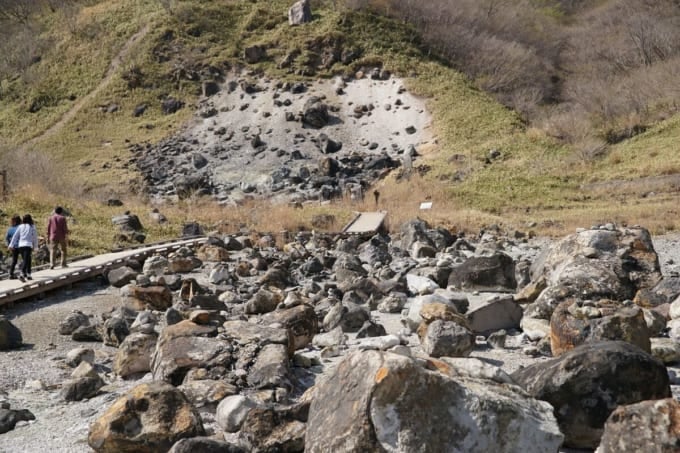
The area around Sesshōseki emits volcanic gases, including hydrogen sulfide. Since these gases are heavier than air and tend to accumulate in lower areas, extra caution is needed when bringing children or pets. It is recommended to carry small children or pets in your arms to avoid exposure to the gas.
Additionally, since Nasu Highlands has a high altitude, temperatures can be quite cold, especially in early spring when visitors may be lightly dressed. Bringing warm clothing is advisable. The path consists of gentle slopes, so wearing comfortable walking shoes or sneakers is recommended.
◎Check Out Matsuo Bashō's Haiku Monument
Sesshōseki was once visited by the famous haiku poet Matsuo Bashō, known for his journey in Oku no Hosomichi (The Narrow Road to the Deep North). Inspired by the scenery, he composed a haiku, which has been engraved on a stone monument at the site.
RELATED ARTICLES
REGIONS
CATEGORIES
FEATURED ON Guide
-
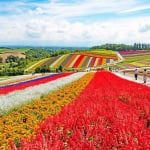
Where will you go for the summer vacation? Introducing recommended spots for domestic travel
-
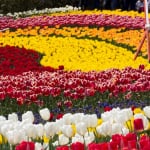
Kaizu City’s Recommended 7 Tourist Spots. Enjoy the Culture and History Nurtured by Wajū!
-
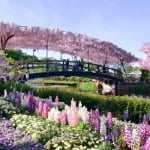
What Makes Ashikaga Flower Park So Special? A Treasure Trove of Photo-Worthy Spots!
-
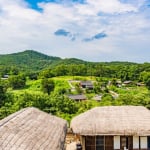
600 Years of Radiant Tradition: Korea’s Historic Villages of Hahoe and Yangdong
-

Two-Colored Seas and a Pink Beach! 4 Must-Visit Spots in North Eleuthera
MOST POPULAR ON Guide
-
 1
1Doha: Must-see Attractions in the Capital of Qatar
-
 2
2Toronto: 10 Things to do in this Picturesque Canadian City
-
 3
3Amarillo: A City Famous for It’s Amazing Canyons, Great History and Music
-
 4
4South Korea: Dazzling Scenery, Rich Culture and Fascinating History
-
 5
5Kuwait: A Country in Middle East Asia Famous for Hot Sand Dunes and Stunning Cityscape

